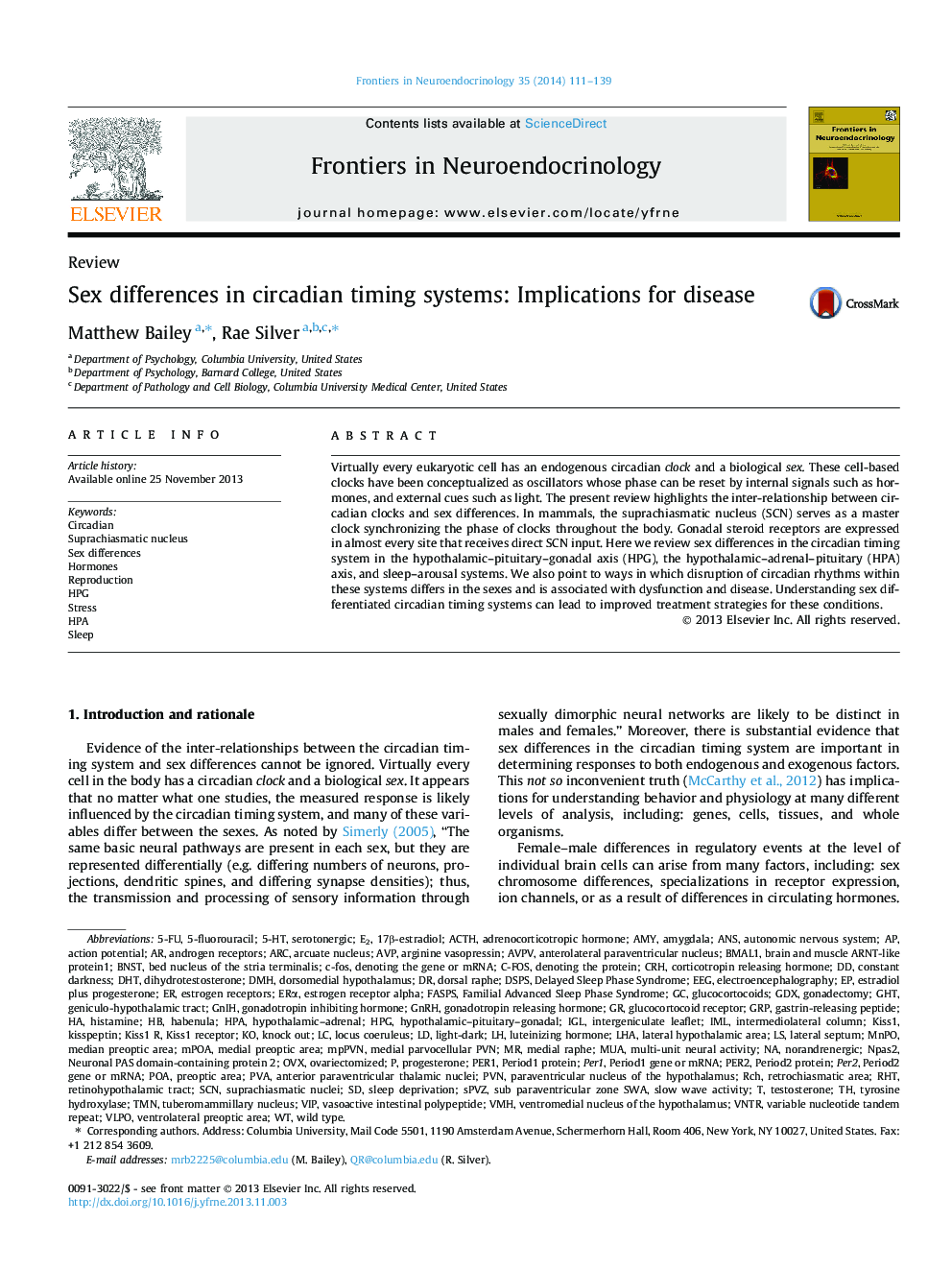| Article ID | Journal | Published Year | Pages | File Type |
|---|---|---|---|---|
| 2799368 | Frontiers in Neuroendocrinology | 2014 | 29 Pages |
•A general overview of circadian rhythms research and the suprachasmatic nucleus (SCN) is provided.•The SCN sends direct efferent projections to multiple sexually dimorphic brain regions.•Gonadal steroid receptors are expressed at most targets sites receiving direct SCN input.•Sex differences exist in the circadian timing of reproduction, stress hormone rhythms, and sleep.•Several diseases with sex differences in incidence are associated with disruptions to circadian systems.
Virtually every eukaryotic cell has an endogenous circadian clock and a biological sex. These cell-based clocks have been conceptualized as oscillators whose phase can be reset by internal signals such as hormones, and external cues such as light. The present review highlights the inter-relationship between circadian clocks and sex differences. In mammals, the suprachiasmatic nucleus (SCN) serves as a master clock synchronizing the phase of clocks throughout the body. Gonadal steroid receptors are expressed in almost every site that receives direct SCN input. Here we review sex differences in the circadian timing system in the hypothalamic–pituitary–gonadal axis (HPG), the hypothalamic–adrenal–pituitary (HPA) axis, and sleep–arousal systems. We also point to ways in which disruption of circadian rhythms within these systems differs in the sexes and is associated with dysfunction and disease. Understanding sex differentiated circadian timing systems can lead to improved treatment strategies for these conditions.
